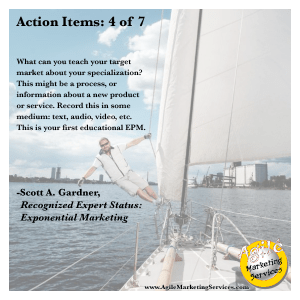Most of my clients arrive by word-of-mouth, which is great. I reached out to a prospect the other day, who was referred by one of my existing clients. I offered them a small freebie. The prospect was initially hesitant, until I mentioned that my existing client – whom the prospect knows – had donated this service to them. Wow, were they impressed!
A note of warning – don’t say something like this if it isn’t true! Make sure you check with your existing customer to make sure they don’t mind doing this.
In addition to the prospect being impressed, my existing client was as well. I offered to give something to someone they know, in their name. How cool is that? The product or service you offer doesn’t have to be super expensive, it just has to have a perceived value. The receiver gets something useful, and the giver looks like a hero. And that’s the point.
There are a number of things you can “give” to existing customers to show you appreciate them. I’ve talked about this before in posts about loyalty programs, and customer retention strategies. A discount is great, but a hand-written card is better. Above both of these is letting your customer appear as the hero to someone else.
I make it a practice to ask all my clients about their favorite charities, especially local ones. When I’m sending out holiday or event cards (again, written and addressed by hand), I often include cards to those charities, letting them know that my clients mentioned them as being a good cause. Even though the card is from me, I make sure my client is mentioned prominently. In other words, I make my client the hero. My clients often hear about that card!
Offering to provide a product or service in the name of your client is, very obviously, also a great way to find new clients!




